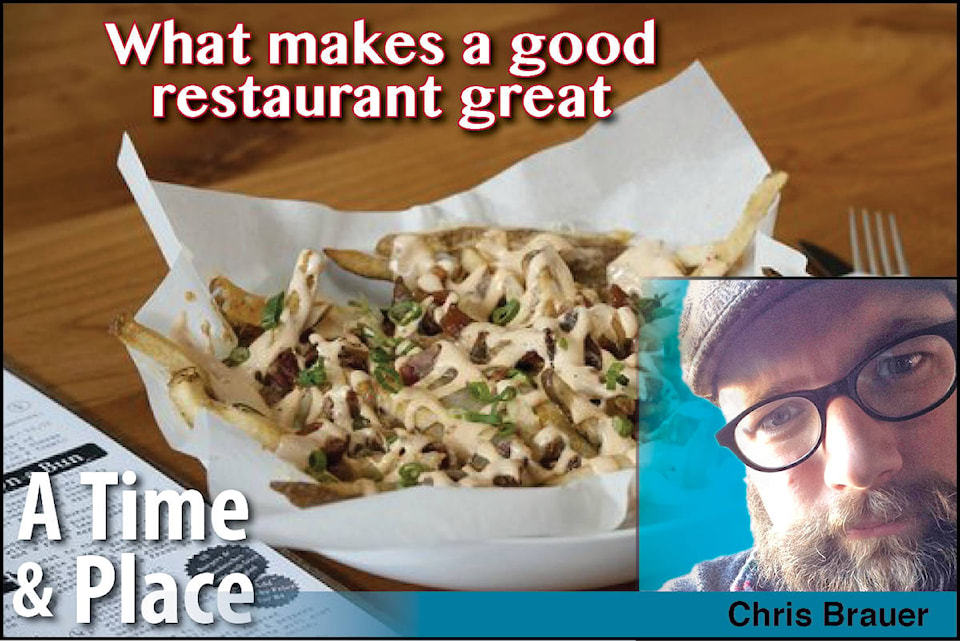It’s become a Thursday night tradition this summer to eat at Pedal & Tap in Kimberley. My wife is a vendor at the market and, after moseying around for a bit and getting some writing done, I meet her for a later dinner. Even though it’s usually past eight o’clock, we still have to wait for a table. But that’s okay. It’s worth it. The food is excellent, the ambience is amazing, the staff is friendly, and there’s great beer on tap. It’s not quiet, but the energy is positive and respectful. Though I’ve only been half a dozen times, it feels familiar. Last time I was there, waiting for a pint of stout and drooling at the thought of mucky fries, I started to wonder about what makes a good restaurant great.
Around sixty percent of new restaurants fail within the first year, and nearly eighty percent close their doors before their fifth anniversary. While it’s not always easy to pinpoint why one place has that special something and another does not, there are other times when it’s perfectly clear.
I have been to some restaurants where the owner is one of those would-be genteel types who, in running a place with far more style than substance, are convinced most of their clientele are riff-raff. The most modest request is interpreted as an unforgivable imposition. They fawn over those that they think have high social standing and ignore those who may not. Many of us who know what it’s like to feel unpopular and underappreciated certainly don’t need to revisit those emotions while having an evening out.
The primary goal of any restaurant is to serve kick-ass food, and I will always forgive simple décor if the food titillates my taste buds. I can’t fathom why so many restaurateurs pay top dollar to high-end designers when establishing a new eatery, but almost nothing in perfecting the menu. Dishes should be well thought-out and meticulously researched, tested and developed.
The food at Pedal & Tap is inventive and occasionally unconventional; it’s not bizarre or outlandish. There’s a difference. Weird combinations of flavours just for the sake of it never work. Done well, a restaurant’s creative offerings should respect and highlight every ingredient.
It’s important to establish a culinary point of view, and not just coast on generic offerings that everyone else is serving. If I wanted food from the lowest common denominator, I would eat more often on Air Canada flights. The owners of Pedal & Tap have no interest in slinging jugs of lukewarm Budweiser to compensate for inedible food. Every element of the restaurant works, and works well together.
It’s unnerving when a restaurant changes direction within the first few months of operation, and what was once a high-end gastro pub becomes a mediocre frat-house watering-hole overnight. When the blue cheese on top of my burger is microscopic, or the berry salad is missing the berries, or the protein on my plate is half the size of my wallet, I am not inclined to give the place another chance. If the acoustics are so bad that I have to yell at my dinner companion, and the uncomfortable seating is making my bum numb, and the staff are ill-treated by management, and I’m jostled by drunks, you can bet I’m not returning.
Luckily, places like Pedal & Tap are doing things right and are a shining example of how restaurants can have longevity and breathe new life into small towns. My only problem is what to order (as it’s all delicious), and whether I’m hungry enough to devour a side of mucky fries.
